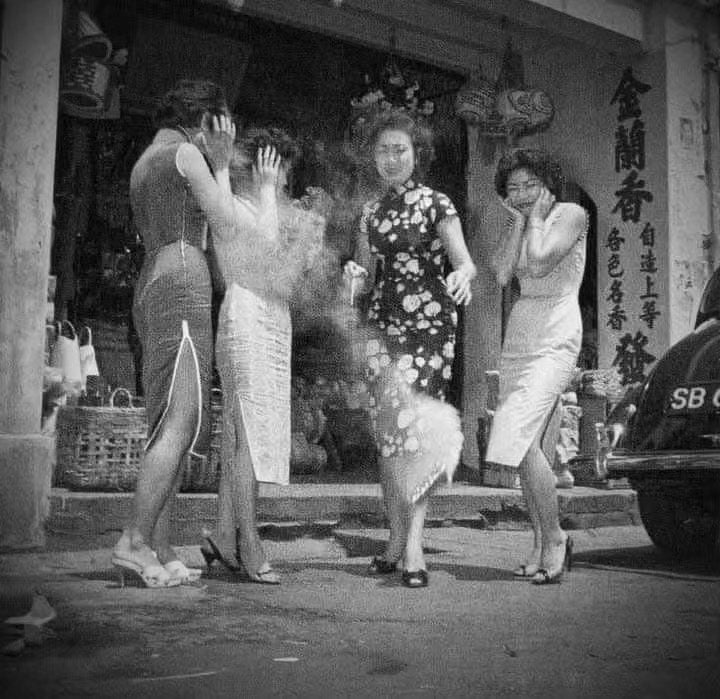深圳溯源
60年代 - 六零年代・和風描金・百花獻瑞・集結傳統紋樣的臺灣古董旗袍 / 1960s - The Sixties Taiwanese Heritage - Gold-Traced Nihonga-Style Qipao with Auspicious Traditional Motifs
60年代 - 六零年代・和風描金・百花獻瑞・集結傳統紋樣的臺灣古董旗袍 / 1960s - The Sixties Taiwanese Heritage - Gold-Traced Nihonga-Style Qipao with Auspicious Traditional Motifs
无法加载取货服务可用情况
「一襲旗袍・解碼跨越時空的東方美學對話」
今天榮幸分享一件上世紀 60 年代臺灣產的和風描金古董旗袍。這件旗袍是時代交融的見證,將中國旗袍的優雅輪廓與精緻的日本傳統紋樣藝術性地結合在一起。
面料上彷彿展開了一幅流光溢彩的畫卷,採用精湛的描金工藝,勾勒出無數富有寓意的圖案。旗袍上面有很多日本傳統紋樣,包括代表富貴的牡丹、長壽堅毅的菊花與松竹梅,浪漫短暫的櫻花,以及幾何圖案如吉祥的青海波、七寶、龜甲、麻葉等。
這一切繁複的吉祥紋飾在旗袍之上百花盛放,每一處細節都經得起反覆推敲。其實收藏古董衣不僅僅是因為它們的稀缺性,更是讓我們在歷史的洪流中看到了每一件衣服背後的故事。這件旗袍所承載的,是 60 年代臺灣對東方傳統文化的再詮釋與對摩登潮流的勇敢擁抱。
"A Qipao Gown - Decoding the Cross-Temporal Dialogue of Eastern Aesthetics"
Today, it is a privilege to share an antique Qipao made in Taiwan during the 1960s, featuring a Japanese-style gold tracing technique. This gown stands as a testament to the cultural blending of the era, artistically uniting the elegant silhouette of the Chinese Qipao with the intricate patterns of Japanese tradition.
The fabric unfolds like a shimmering scroll, utilizing exquisite gold-tracing to detail a myriad of auspicious motifs. The Qipao is adorned with many traditional Japanese patterns, including the prosperity-symbolizing peony (Botan), the enduring chrysanthemum and Sho Chiku Bai (Pine, Bamboo, Plum), the romantically fleeting cherry blossoms (Sakura), and geometric patterns like the auspicious Seigaiha (blue ocean waves), Shippou (Seven Treasures), Kikko (turtle shell), and Asa-no-ha (hemp leaf).
This profusion of celebratory and symbolic patterns blossoms across the Qipao, with every detail bearing scrutiny. Collecting antique garments is not just about their scarcity, but about recognizing the story behind each piece within the flow of history. This Qipao embodies Taiwan's 60s reinterpretation of Eastern tradition and its brave embrace of modern trends.
分享












